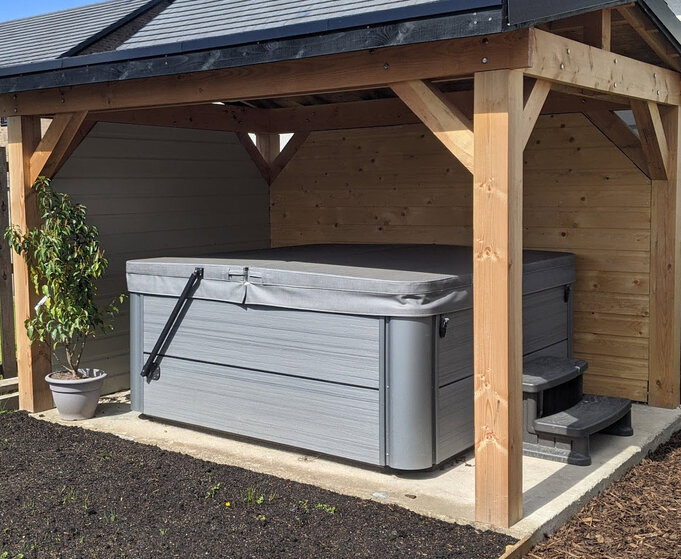Outdoor Kitchen Countertop
Dear experienced tilers,
I am writing in hopes that someone with experience in my particular task has done it before and is confident that the materials and stuff they use will work out well for an outdoor kitchen counter.
I assume the easiest solution to solve this problem is to hire someone to install a granite countertop. I have two issues with this, 1. I can't afford it and 2. It's hard for me to put granite or similar material, on an outside kitchen when I don't have it in my inside kitchen. In addition, my cabinets have more of a rustic appearance rather than polished.
I was considering doing a cement countertop, but this would have to be done on top of the cabinets in place, because of all the cut outs, there is no way of shaking the bubbles out, and when I asked for a few quotes, it was almost as expensive as a granite counter top.
As a temporary counter top (or so I thought, for the last 11years) I used 2 sheets of sheathing plywood covered with plastic table cloths matching what ever event we happen to be celebrating (birthday, baptism, baby shower, etc.)
As I start this project I will have to purchase a new plywood base and cut it to size.
In search of options I came across pool coping, which I liked as an alternative. I liked the 12” x 24” x 2”. The size works well because I can use the coping around the whole counter, having a finished edge, no actual “holes” had to be cut just slices that would go around the columns, minimum cuts for me, and fill in the center with another piece like so:
My first question is do I use Marine plywood? 1 or 2 layers, and ultimately how thick. Originally I thought of 2 pieces of 3/4” would be a strong base along with one layer of cement board. The pool coping is 2” thick, but I think that is way overboard and ultimately too much weight. My brother doubts that the cabinets or the deck was made to hold that kind of weight. So the question is “should I use the pool coping with just one sheet of 3/4” marine board or what?”
Next I was shown 1/4” porcelain, which seems like it is too thin and easily cracked. Lastly, I have found some outside porcelain that is itself 3/4’ thick and seems like a good possibility. In either scenario I’d like your opinion, which you think of as the most feasible for me to accomplish (least amount of cuts, easy to apply molding, and forgiving material). I am fairly well experienced with wood work and construction, but I never have done tile work. I do have one family relative that said he would assist me, but he has never done outside tile work. I don’t mind hiring a person for this, but I have not found anyone who is experienced in this. I would like to do this only once, (and before I have to move out of this house), so I do need help telling me what experienced tiler’s would suggest as far thicknesses, bases, and glues. Ten years ago this seemed like a fun project to tackle, now I would just like to be done with it and enjoy it the space. Thank you in advance for any assistance you can offer.
Cynthia




